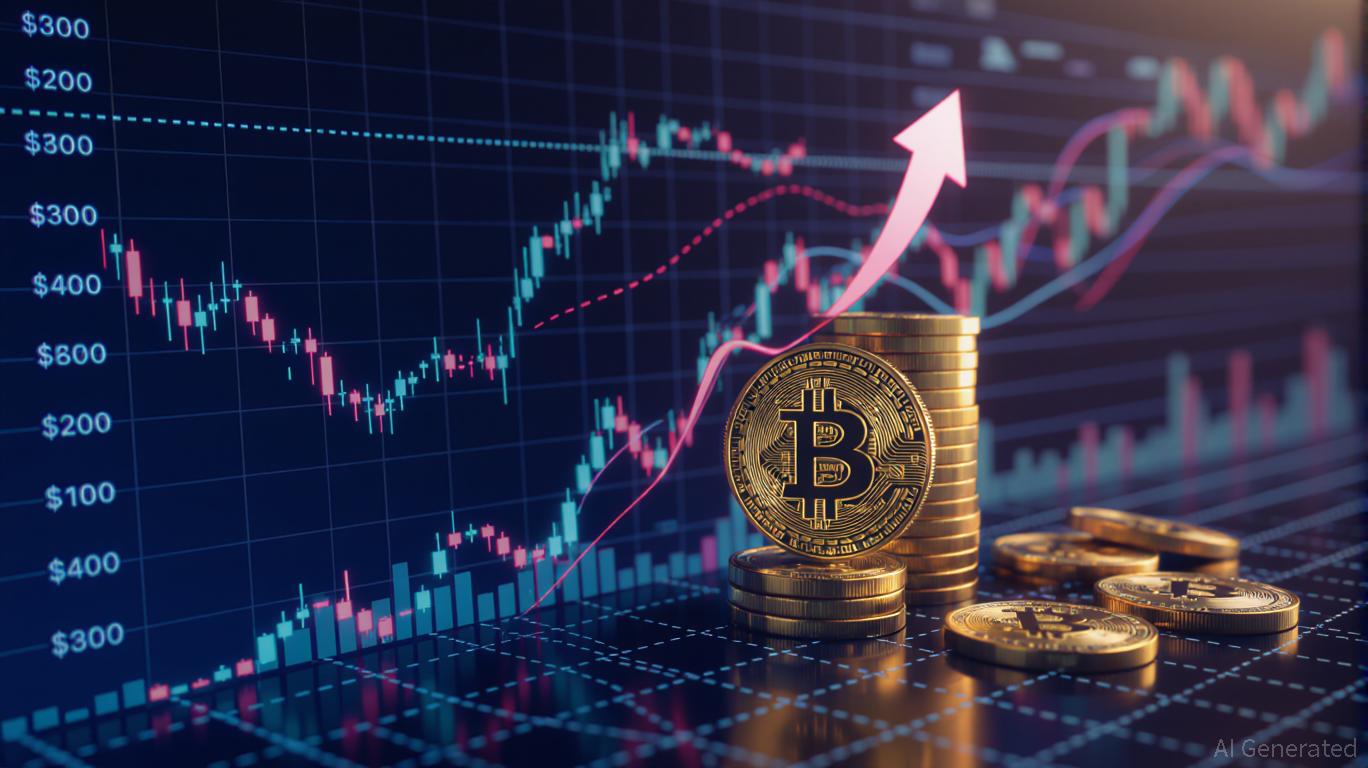HYPE Token Experiences Rapid Growth: Are We Seeing a Temporary Hype or a Genuine Innovation?
- HYPE token surged 64.8% in 2025, driven by institutional backing, tech innovation, and speculative demand. - Paradigm, holding 19.14M HYPE ($763M), wields governance influence but risks whale-driven market distortion. - Hyperliquid's ecosystem includes HyperEVM, staking, and $400M buybacks, creating a flywheel effect for token value. - Partnerships with Phantom Perps and corporate treasuries (e.g., Eyenovia) expand adoption, while HIP-3 decentralizes market creation. - Skepticism persists due to meme coi
In early 2025, the HYPE token—native to the Hyperliquid decentralized exchange—has experienced a dramatic rise of over 60%, driven by a combination of institutional support, innovative technology, and speculative enthusiasm. However, this surge prompts a crucial question: Is the excitement concealing weak fundamentals, or does it mark a real advancement in decentralized finance?
Institutional Trust and Governance Power
Paradigm, a prominent blockchain investment group, has become the largest HYPE token holder, possessing 19.14 million tokens worth $763.18 million. These tokens are distributed across 19 wallets, a tactic aimed at optimizing both security and operational agility, as detailed in a
Still, institutional dominance does not automatically ensure value. Some critics warn that such concentration can skew the market, fostering a “whale-driven” environment where price shifts are dictated more by large holders than by organic demand. Nevertheless, Paradigm’s previous investments in
Technological Strength and Ecosystem Growth
The HYPE token serves a broader purpose than just governance. It is central to a dynamic ecosystem that features staking for reduced trading fees, a buyback system, and an expanding range of decentralized applications. For example, the HyperEVM layer—launched in February 2025—enables developers to deploy EVM-compatible smart contracts directly on Hyperliquid’s infrastructure, as highlighted in the
The Assistance Fund, which receives 92% of protocol fees from Hyperliquid, has bought back $400 million in HYPE tokens during the first half of 2025, directly enhancing the token’s value, as reported by the

Strategic Alliances and Market Growth
Collaborations have further reinforced HYPE’s foundation. The July 2025 integration with Phantom Perps—a decentralized trading platform—brought 20,000 new users to Hyperliquid, according to the
Public companies such as Eyenovia and Nuvve have also joined in, adding HYPE to their corporate treasuries, according to the
Speculation and Uncertainty
Despite these strengths, doubts remain. HYPE’s association with the “meme coin” trend—illustrated by projects like Little
Additionally, the absence of a public whitepaper for HYPE (unlike projects such as AEA Token, which launched in November 2025 with comprehensive documentation) leaves some uncertainty. Although Hyperliquid provides technical documentation, critics argue that a lack of transparency could obscure risks like regulatory issues or centralized control, as noted in the
Weighing Substance Against Speculation
Evaluating HYPE requires separating genuine innovation from speculative hype. Institutional support, technological advancements, and strategic collaborations offer a solid base. Yet, the token’s volatility and marketing tactics reminiscent of meme coins invite skepticism.
For investors, the outlook depends on their investment horizon. Those seeking short-term gains may benefit from current volatility, while long-term participants should consider Hyperliquid’s ability to sustain buybacks, grow its dApp ecosystem, and handle regulatory pressures. If Hyperliquid can uphold its 73% share in decentralized perpetual trading, as stated in the
Final Thoughts
The recent rally in HYPE is the result of institutional trust, technological progress, and key partnerships. While speculative aspects are present, the token’s underlying strengths—especially its role within Hyperliquid’s ecosystem—point to a meaningful development rather than a fleeting bubble. Nonetheless, investors should proceed with caution, as the distinction between hype and real value in crypto is often subtle.
Disclaimer: The content of this article solely reflects the author's opinion and does not represent the platform in any capacity. This article is not intended to serve as a reference for making investment decisions.
You may also like

YFI rises 6.35% amid robust short-term performance
- YFI surged 6.35% in 24 hours on Nov 7, 2025, with 8.24% weekly and 7.99% 30-day gains despite a 36.4% annual decline. - Analysts attribute the rally to strong market sentiment and crypto sector dynamics, not specific project announcements or technical updates. - Technical indicators show a bullish reversal pattern, suggesting renewed investor confidence or algorithmic trading activity. - A proposed backtesting strategy tests buying after 5% daily gains, holding for three days to capture upward trend cont
Bitget Transforms Capital Movement by Integrating Conventional and Digital Markets
- Bitget launches $2M interest-free loan program for altcoin market makers, slashing qualification requirements by 50% to boost liquidity in smaller-cap tokens. - The exchange partners with Fasanara Capital to pioneer hybrid liquidity models, merging blockchain and institutional finance for real-time cross-border capital flow. - Bitget slashes stock futures fees by 90%, attracting $300M+ daily volume and surpassing $1B cumulative trading since September 2025 launch. - Through multi-chain integration and 20
Zcash Halving and Its Impact on the Market: Price Movements After Halving and Investor Sentiment
- Zcash's 2025 halving triggered a 750% price surge to $400+, driven by privacy-focused demand and technical upgrades. - Unlike Bitcoin's stagnant $103k price, Zcash's 28% shielded supply reflects growing demand for privacy amid regulatory scrutiny. - Investor psychology shifted toward privacy coins, with Zcash outperforming Bitcoin as capital rotated during market volatility. - Analysts predict Zcash could reach $580 if it breaks $500 resistance, contrasting Bitcoin's deflationary model with utility-drive
